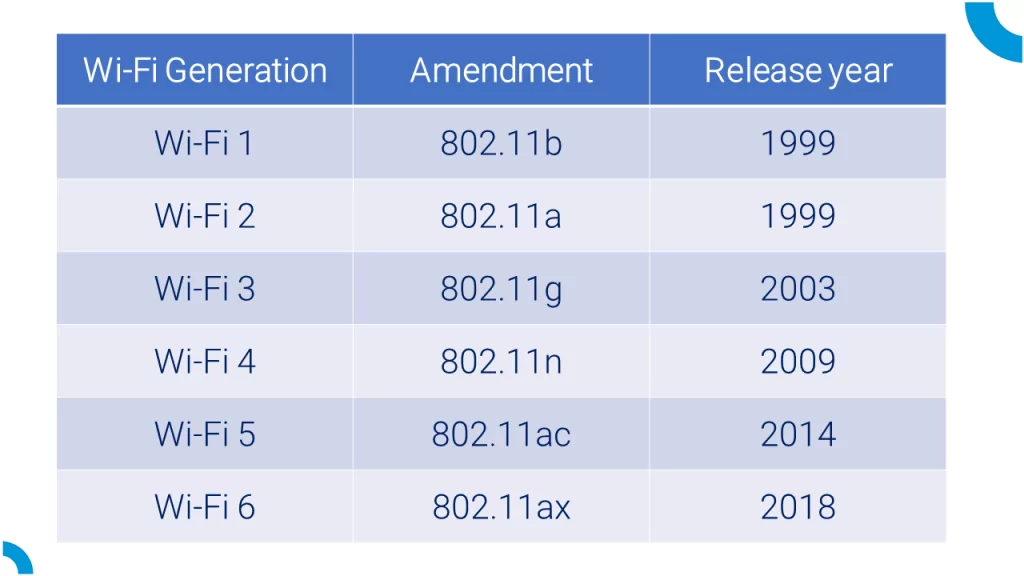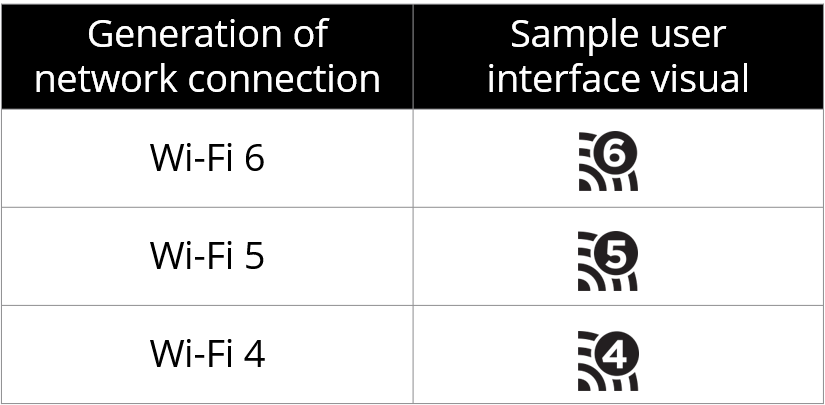Where did Wi-Fi Generations evolve from?
In 1997 we were introduced to a new technology – Wi-Fi, or to be more specific IEEE 802.11 standard. Demand for better performance and reliability forced the standardization authority i.e. IEEE to release amendments to the initial standard. At the beginning, these amendments were denoted as single letter appended to the 802.11, eg. 802.11b, 802.11e or 802.11g. Some of these improvements had higher influence than the others on the network performance and that’s why we are, in general, more familiar with 802.11g rather than 802.11e. Nonetheless, there are plethora of different improvements to the original standard. Amendments a-j were then gathered and released as 802.11-2007. Then amendments k-z were gathered as 802.11-2012. Running short on single letters IEEE decided to go with pairs starting with aa, ab (this one was actually skipped due to possible confusion with devices supporting both a and b), ac, ad and so on.
You really need to follow the recent changes if you don’t want to be out of the loop.
Wi-Fi Alliance noted the need for an easier way to denote and version Wi-Fi standards. Therefore, in this regard a new naming convention: Wi-Fi Generations have been introduced.
Wi-Fi Generations
Wi-Fi Generations affect not only new releases, but also refer to the past amendments. Currently Wi-Fi Alliance has defined 6 generations. Each step is significant improvement in network performance and security. No more minor version changes that can cause only confusion.
Let’s take a look on the Wi-Fi generations and what amendment they correspond to:

Table 1: Wi-Fi Generations
As you can see the generations refer to the major amendments. I encourage you to read more about each of them in our previous posts about Wi-Fi Evolution and Wi-Fi 802.11ax.
Benefits of new naming convention
Simplifying naming of the Wi-Fi standards is a step in good direction. In my opinion it will increase awareness about different versions of Wi-Fi. For many casual users Wi-Fi was just Wi-Fi. Most of them didn’t know the difference between amendments and probably they weren’t even aware of them. Wi-Fi Alliance really wants this naming to be widely used. Imagine that, when selecting Wi-Fi network you can see different icons related to the generation. What you will subconsciously do is to select the best one – the one denoted with highest number. Doing so you will have better experience, throughput and security.

Wi-Fi Generations Icons [source: Wi-Fi Alliance]
Doesn’t this sound familiar? I already have a mobile network icon showing me if I use 3G or 4G network. Is this coincident that Wi-Fi Alliance announces 6th generation of Wi-Fi around the time, when 3GPP releases 5G mobile network? I will leave this question open for a discussion 🙂
Other materials
[1] You might also find interesting a post about Wi-Fi standard evolution and Wi-Fi 802.11ax while all our posts on Wi-Fi can be found here.
[2] To see other posts on network and wireless fundamentals – for example about pathloss, shadowing or MIMO – see our explained section.
[3] To check out our training on Wi-Fi systems, click here.







